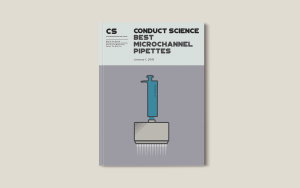A team is defined as task-dependent people who share responsibility for a particular goal and see themselves and others as intact social units embedded in at least one larger social structure (e.g., a professional unit or company), and manage their relationships across the association.
Although teams meet all the characteristics of a group (an arrangement in which more than two people work together for a given period), teams involve the division of expertise in a setting that includes rewards or disciplines that are shared by all employees. The teams blend different skills that help in achieving goals that people cannot achieve working alone.
Teams are found everywhere in the clinical laboratory. Various advantages can be gained by working in a team. These advantages include:
- Increased individual performance
- Improved quality
- Reduced absenteeism
- Greater employee involvement
- Reduced staff turnover
- Leaner manufacturing structures
- Improved production cycle time
In modern economies, teams are generally considered an essential factor in organizational success because they have to respond quickly to customer needs. However, dysfunctional groups and teams can harm assigned employees’ performance, retention, and trust. Such dysfunctions include infighting among team members, social distractions, conflicting goals designed to satisfy individual team members rather than the clinical laboratory, and poor communication. This article will first explore what is involved in building a viable team by distinguishing between work units and teams, analyzing team processes, understanding how effective organizations are made with teams, and discussing how to select good team members, motivate the team, and demonstrate effective team leadership.
The Difference between Team and Group
The key difference between a “team” and a “group” can be seen from the perspective of synergy. A group is defined as “a collaboration that shares information and makes decisions to help each member fulfill his or her role.” Therefore, the group does not require a joint effort. The outcome of the group is the sum of the contribution of each group member. However, in a team, the team members make coordinated efforts that generate positive synergy. In addition, the team’s performance is greater than the sum of each individual’s input.
In a workgroup, members’ skills may or may not complement each other, individuals share data, have negative or neutral synergy, and accountability is placed at the individual level. On the other hand, a team works with collaborated effort, the synergy between individuals should be positive, and accountability should be individual as well as shared. Thus, members’ skills are complementary, and team members help each other to achieve team goals.
What are the different types of teams?
Teams can be categorized in different ways. Teams can be full-time or part-time, depending on how members use their time. Teams can also be temporary or permanent. Teams can be categorized by:
- Work teams. A work unit responsible for producing goods or providing assistance or services, and whose members are usually well-defined and full-time.
- Parallel teams. These consists of members from different work units or job. They are assigned tasks that the regular organization cannot perform, such as quality improvement.
- Project teams. Teams that create one-time outputs, such as a new product or service that the company will market, a new information system, or a new facility.
- Management team. Teams that coordinate and direct the subunits under their jurisdiction, integrating interdependent subunits across core business processes laterally.
Teams are also classified into problem-solving, self-managed, and cross-functional teams.
- Problem-solving teams. Team members suggest ideas on how to improve work processes and methods.
- Self-managed work teams. Team members collectively plan and schedule work, make operating decisions and solve problems. Fully self-managed work teams also choose their members and manage each other’s performance.
- Cross-functional Teams. Team members are of the same hierarchical level but are from different work areas.
Teams can also be categorized based on their autonomy:
- Semi-autonomous work teams. Staff oversees and carry out major production activities.
- Traditional work teams. Employees perform the main production tasks but have no management responsibility or control.
- Quality circles. Participants join voluntarily and receive no financial reward. Teams must come up with ideas and suggestions but have no authority to make decisions and implement them. Problem-solving areas are limited to quality, efficiency, and cost reduction issues.
- Self-managed teams (or autonomous work teams). Members have control over the management and performance of all tasks – from purchasing raw materials through the transformation process to shipping, including any supporting tasks – such as quality control and maintenance. The product can be a definable part of the development process as well as a completed process.
- Self-designing teams. These teams are similar to self-managing teams. However, they also control the design of the team and make decisions on what work needs to be done and who should be part of the team.
Group Process Model
The group process model suggests that group effectiveness equals the sum of individual potential plus process gain minus process loss. Group processes include the communication patterns used by the team members to exchange ideas and information, the processes and cycles they use to set standards and make decisions, the interaction with the leader and the leader’s behavior, the team’s power dynamics, and the way teams resolve conflict.
Process loss includes time spent in team meetings, extra time needed to make decisions in groups, administrative functions performed when employees work in teams, and production loss associated with social loafing. Process gains are known as synergy. For example, in a task requiring a diverse set of skills, such as in a laboratory, the quality of the product tends to be greater if a team performs the task than if an individual works alone.
The group process model is based on the idea that for a team to work, process gains must exceed process loss in the long run. For example, weekly team meetings that last more than an hour takes time away from the teams performing their respective production duties, representing process loss. However, during this one hour, the team finds ways to be more productive. Therefore, the process loss of the team meeting is offset by the process gains from implementing decisions made at the meeting, which enhances productivity.
Awareness about the time spent in team meetings poses questions like, “Are these meetings necessary and useful?” and “What would happen if the weekly meetings were skipped?” The answer to the last question is if a meeting was skipped for a few weeks, the support workload for that week would increase by about 2.5% (percentage increase from 39 hours to 40 hours). However, suppose meetings are held infrequently, then decisions to solve problems would not be made, fewer ideas will be presented, and ideas will not be refined during the meetings, thus decreasing productivity. In addition, conflicts may spread and increase. Therefore, these meetings are seen as a mechanism to correct past problems and as an investment on time for future productivity. This means that while the time spent in meetings is viewed as process loss, the consequences of the meetings will be assessed for their benefits and be process gains.
It is also important to note that team meetings by themselves do not guarantee net process gains. There are different tools and strategies to conduct productive meetings. Some general guidelines include:
- Clearly state the reason or purpose of the meeting.
- Make an agenda and distribute it before the meeting. Ensure that everything in the agenda reflects the purpose of the meeting.
- Ensure that the right people are attending the meeting.
- Ensure that all employees are aware of the meeting procedures. Everyone should have enough freedom to express their views. Input from those who are introverted, reserved, or thoughtful should be solicited.
- When it comes to action, assign tasks, allocate resources, and take follow-up action. Failure to do so sends the message that the team is not a serious entity and that the issues and results of the meeting are not necessary.
To keep the team effective, team members sometimes have to put team goals first. Anything that diminishes the importance or value of the team should therefore be avoided wherever possible, whether it seems insignificant or not.
Reference
- Garcia, L. S., Bachner P., Baselski, V. S., Lewis, M. R., Linscott, A.J., Schwab, D. A., Steel Jr., J. C. H., Weissfed, A., Wilkinson, D. S., & Wolk, D. M. (Eds.). (2014). Clinical laboratory management (2nd ed.). Washington, DC: ASM Press.












